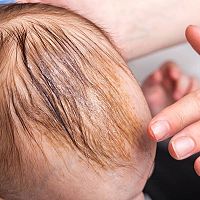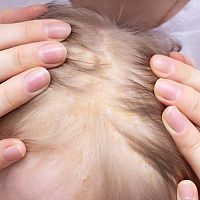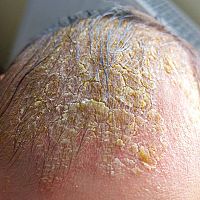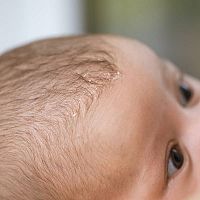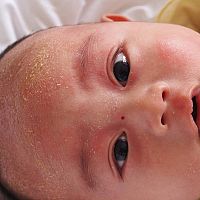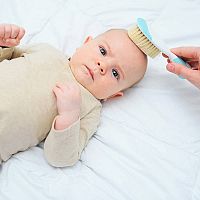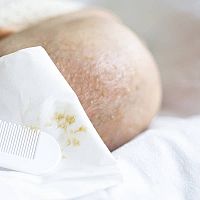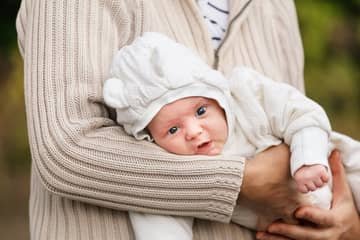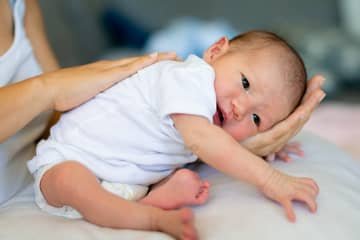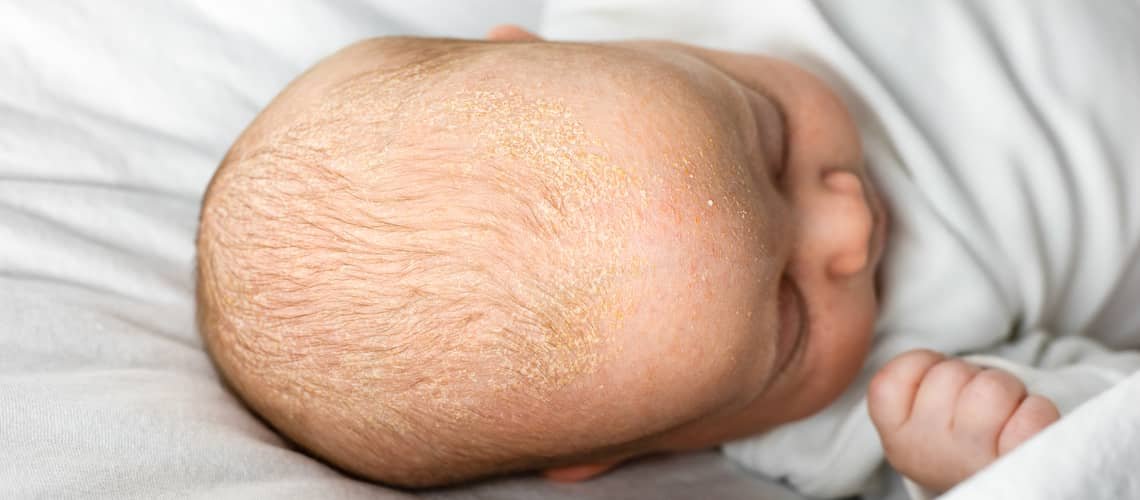
Cradle cap in newborns and older children. Shampoo, special cream and olive oil will help
Do you suspect that you have noticed white to yellowish-white scales in your hair or on your head? It can be cradle cap (milk crust) or, more precisely, newborn seborrhea. Paradoxically, the label cradle cap does not only apply to newborns and infants. Cradle cap in older children in preschool or adolescent age is not unusual. Although this non-infectious skin disease often looks serious, there is no need to be overly concerned. In most cases, regular care is sufficient and skin problems will gradually disappear. Is there a cradle cap cream? Why use a special shampoo or olive oil? More in our article.
- What is cradle cap?
- Reasons for the occurrence of cradle cap
- Symptoms of cradle cap - what does it look like?
- Treatment of cradle cap in babies and older children
- A doctor's visit - when is it necessary?
- Cradle cap in infants and appropriate prevention
- cradle cap in older children
- Experiences
- The most frequent questions - FAQ
- Comments
Mothers often believe that this skin disease arises due to neglected hygiene. However, that is a myth. Hormonal changes, which are typical for individual periods in newborns and older children, are primarily to blame. Despite the fact that cradle cap can persist for a long time in children, regular care will help to get rid of this skin problem.
What is cradle cap?
This popular name is terminologically sometimes confusing, but it was relatively common among mothers. In fact, cradle cap is the name for a type of seborrheic dermatitis (seborrhea) or it is also called neonatal seborrhea. It occurs primarily in babies between 3 and 12 weeks, but also in infants aged 3 to 12 months. Seborrhea is not an exception even in children of preschool age or children in puberty.
It is a relatively common non-infectious skin disease, which occurs mainly in individuals in infancy with a possible occurrence of an inflammatory component. Cradle cap is considered more of an aesthetic lesion, which is not dangerous for the child, painful and does not even itch. However, it should definitely not be underestimated or ignored. It is manifested by the deposition of dry scales that peel off, or the skin is greasy and sticky and has a yellowish color. The reason why the skin reacts in this way is that with seborrheic dermatitis old dead skin cells are covered with new ones. Malassezia yeasts multiply in places where sebum production is increased, which can cause inflammation, redness and the formation of scabs.
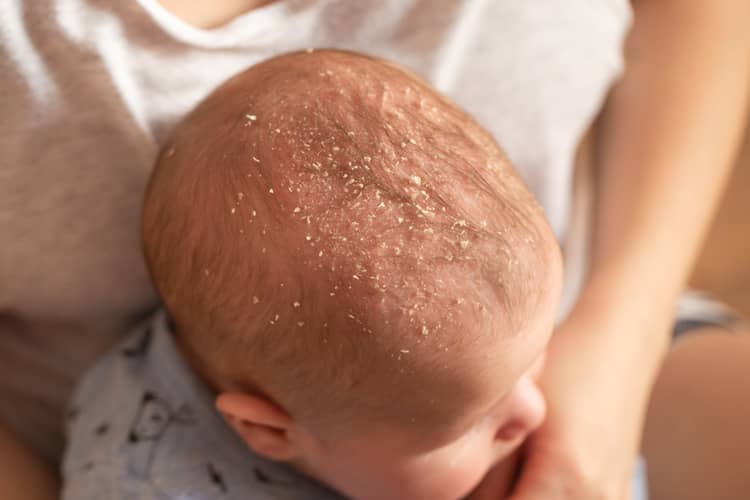
Reasons for the occurrence of cradle cap
Why does seborrheic dermatitis actually occur? There are more factors and possible causes. One of the reasons is that in infancy, or in newborns, the rate of sebum production is increased. Sebaceous glands are more active also because of maternal hormones, but also due to natural hormonal changes in the baby. This is also confirmed by the fact why seborrhea appears in older children during puberty, who also undergo significant hormonal changes. Sebum clogs the skin cells, the skin dries out, and therefore the formation of scale deposits and the typical peeling of dry parts of the dead skin occurs.
The probability of the formation of cradle cap is higher, for example, in children who have drier skin and have a predisposition to the formation of eczema or allergies. It can also be problems with immunity or lack of certain vitamins and minerals. Genetic predisposition also has an influence on its development.
The reason may also be the use of inappropriate shampoos or creams that disrupt the skin's protective film. Especially in newborns, the outbreak of cradle cap can be caused by wearing a thick hat and babbling in the winter, or wearing a hat unnecessarily in warm weather, which causes excessive sweating and increased sebum production. Cradle cap in older children can also originate from bad eating habits (excessive consumption of animal proteins and fats), stress and weakened immunity.
Seborrheic dermatitis and insufficient hygiene?
Some parents mistakenly believe that the reason for the appearance of cradle cap is that hygiene was neglected. However, that is not true. Seborrhea can appear even if the care and hygiene of the skin has been exemplary. In the same way, the occurrence of cradle cap in newborns is not related to whether the baby is born with or without hair.
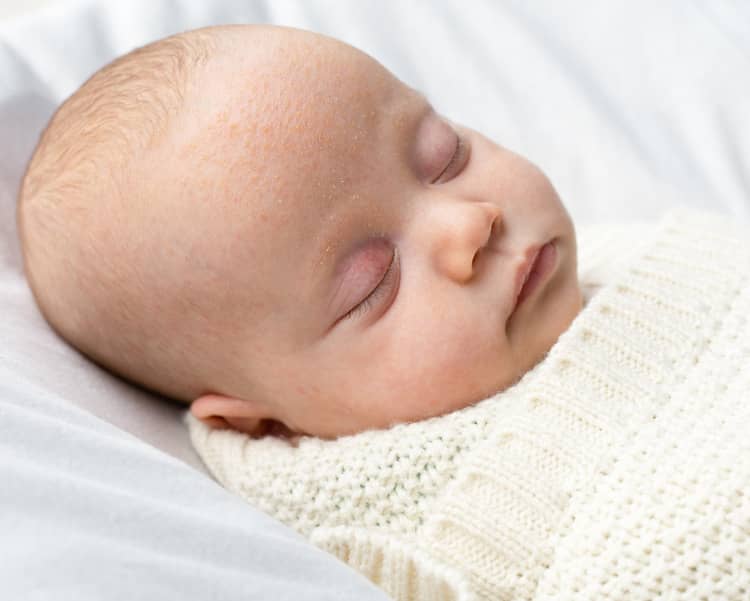
Symptoms of cradle cap - what does it look like?
Cradle cap is a non-infectious skin disease that looks very serious and unattractive. Nevertheless, it is not painful and does not cause irritating itching. Treatment and attention to the places affected by cradle cap should not be neglected. Neglect can cause an overgrowth of yeast, which can lead to the outbreak of a strong bacterial infection and inflammation.
Most often, cradle cap appears on the head, mainly (scalp) and very often, which is the least pleasant, cradle cap occurs in the hair. Yellow scabs in the hair can be caused by higher production of sebum, but also by greater irritation. Peeling scales can also appear on the face, eyebrows, bridge of the nose, ears or neck. Rarely, for example, under the armpits, in the skin folds of the child or in the diaper area. As a rule, it affects larger areas or appears only very locally and covers small areas of the skin.
And what does cradle cap actually look like? Peeling scales of white or yellowish-white color are typical for the affected area. The affected area may have brownish or reddened areas that may be sticky to the touch due to excessive production of sebum.
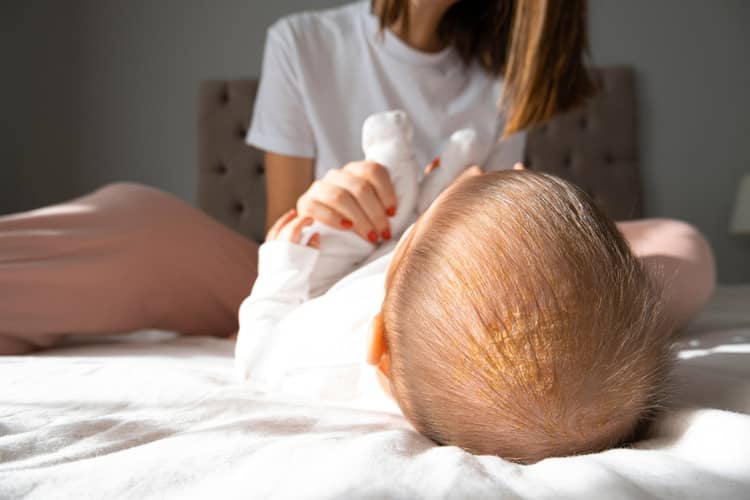
Treatment of cradle cap in babies and older children
First of all, it is important to point out that scratching or peeling scales and rattles is not correct. When the layers of the skin epithelium are forcibly removed, there is a risk of infection. Treatment is always more permanent, but regular care is necessary. Do not try to speed up this process. Otherwise, the therapy may take many times longer, and neglecting the affected areas or improper care may worsen the stage of the disease. So patience and perseverance are key, sometimes it can appear repeatedly. What works on cradle cap?
Olive oil for cradle cap
It is important to locate where seborrheic dermatitis occurs, experts recommend rubbing the affected area with vegetable oil. For newborns or infants, it is advisable to use baby oil. Rubbing the spots with olive or almond oil has proven effective for some mothers, especially with older children. Alternatively, there are dermatologically tested oils with chamomile extract or vitamin E and D.
For newborns, experts do not recommend using vegetable oils that could cause allergies in them. Leave the oil alone for 30 to 60 minutes, the scales and rattles will soften and will be easier to remove when combing or washing. Also, definitely do not use any moisturizing gels, oils or products intended for adults.
Cradle cap brush
If you have applied the oil and left it to act long enough, it is advisable to start with a very gentle and non-violent removal of scales and scabs. Never remove scales and scabs by force, there is a risk of infection and inflammation. For this purpose, a thick, soft brush for babies is used, which is excellent for combing the cradle cap from the hair. You can use, for example, a soft cotton towel or a piece of gauze. Move the area in a circular motion. After combing, it's my turn to wash my hair.
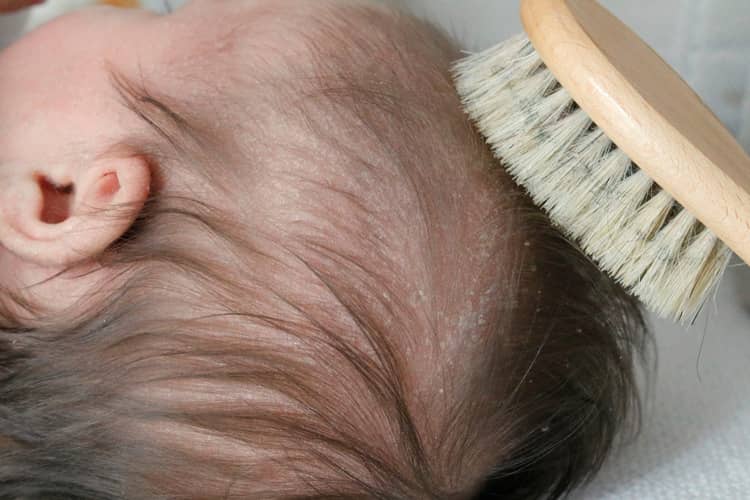
Cradle cap shampoo
There are also special shampoos for cradle cap. They are over-the-counter and have a keratolytic effect, while also soothing and hydrating the skin. They regulate the production of sebum and soften scales and scabs, similar to the application of oil. When washing and massaging the area, they help remove dead skin more easily. It is necessary to let them act for a certain time.
Wash the child's head, hair area, face (locally), but also other areas with circular movements. If you do not have a special shampoo available, feel free to use a classic baby shampoo or wash the area with a cradle cap only with clean water and then apply a moisturizing cream - milk. If there is cradle cap in the hair, you should wash your head at least three to four times a week. If there are residual flakes in the head between the hairs, gently brush them out with a brush.
Cradle cap cream
There are also special creams or gels that are suitable to use after bathing to soothe and hydrate the skin. You can treat reddened skin after a bath, for example, with calendula cream. Some creams should be applied at night and rinsed off in the morning. They usually contain natural butters and oils - shea butter, extracts from aloe vera, calendula or chamomile, avocado oil and others. For some moms, Bepanthen has also proven itself for cradle cap, which soothes the skin. Avoid products that contain salicylic acid.
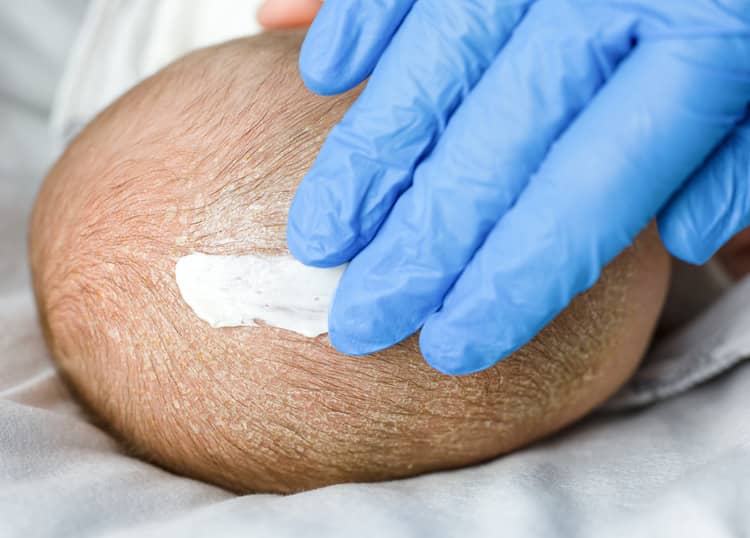
A doctor's visit - when is it necessary?
In most cases, newborns and older children do not need a doctor's diagnosis. There is no need to be alarmed by redness after bathing or combing out scales. A visit to the doctor in connection with the stages of cradle cap is only necessary in cases where the scabs are oozing or possibly spreading to other parts of the body. Also, if the place is swollen or traces of blood appear, it is necessary to see a doctor and contact a dermatology clinic.
Cradle cap in infants and appropriate prevention
The hormonal origin of this disease means that guaranteed prevention is not completely possible. For infants and newborns, whether the baby has hair or not, regular washing and massage of the head is recommended. In this way, blood flow is promoted. You can also use a soft brush for babies. Washing a baby's hair should be at least 3-4 times a week, regardless of whether there is a risk of cradle cap. Wearing thick hats can promote the activity of sebaceous glands, so choose more breathable materials.
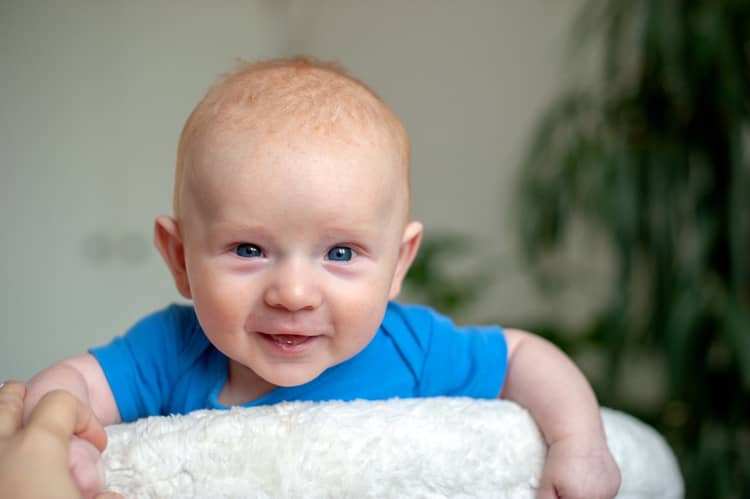
cradle cap in older children
Seborrheic dermatitis, as we mentioned, is not only a problem for newborns and infants. In a certain percentage of cases, it occurs in boys and girls in pre-school and adolescent age. The main cause is hormonal changes or genetic predisposition. At a later age, this disease can also appear because it occurred when the child was a toddler. The treatment principles themselves, the procedures and the preparations used do not differ in any significant way. You can also use preparations intended for adults.
Experiences
Many mothers have experience with cradle cap. According to them, this is a common problem that can be treated with oil, cradle cap is soluble in oil. Classic olive oil or butter has proven itself to remove it. Babé Cradle Cap Shampoo or, according to some mothers, even petroleum jelly, also works.
The most frequent questions - FAQ
Do you suspect that symptoms of cradle cap have appeared on your child's skin? Do you also struggle with this skin disease in your child? If you need advice, let us know. We will be happy to advise and help you. We will also be happy if you contribute your advice, experience or opinions to the discussion under the article and thus help other parents with your own tips and tricks that worked in your case.
What is cradle cap?
Can cradle cap occur in older children?
What to do if there is cradle cap in the child's hair?
Gallery
Pridať komentár

